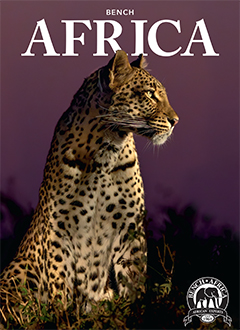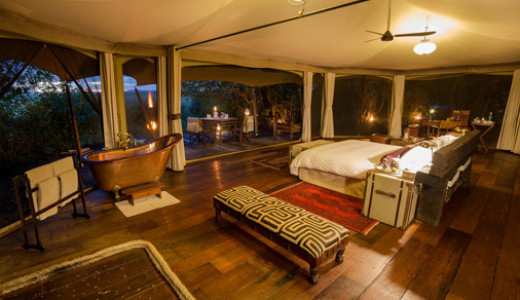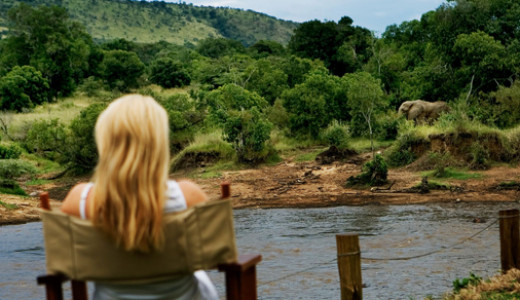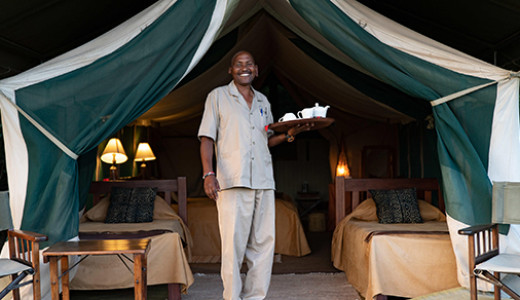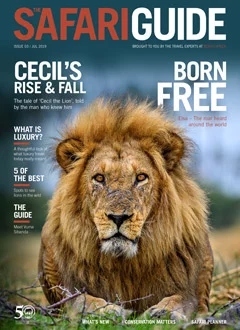One of the most popular safari destinations on the planet, Kenya’s Masai Mara National Reserve provides travellers with an authentic African safari experience. Expect picturesque scenery and regal Maasai people clad in striking red garb, and of course the Mara is best known for the annual Great Migration of millions of wildebeest and zebra.
So, when is the best time to visit the Masai Mara?
Ask around and everyone will have a different opinion on when is the best time to visit the Masai Mara. This is because everyone has their own preferences.
Having grown up in Kenya, returning yearly to visit my parents, I have personally visited the Masai Mara in all seasons and I can personally guarantee that there is no bad time to visit. Each and every month of the year offers something wonderful and unique.
At the end of the day it's all going to boil down to what safari experience best suits you, so let's take you through the year month by month and let you make up your mind on what best suits you...
January in the Masai Mara
✅ You can expect lush green valleys and great animal sightings during January.
✅ The game is plentiful and the skies are beautifully clear, day and night.
✅ With fewer tourists, you’ll feel that you have the Masaai Mara all to yourself!
✅ This is also the time of the lesser known “Loita” or northern migration which is predominantly a wildebeest and zebra migration into the Olare Motorogi and Mara North Conservancies, with the animals often remaining until March each year.
?️ While the daytime temperatures are hot, the evenings and nights are comfortably cooler.
February in the Masai Mara
✅ February is a time of clear skies and plentiful game, when the short-grass animals head to, and congregate, around the remaining permanent waterholes in our area, often attracting predators.
✅ Fewer tourists mean an “almost exclusive” feel to the Masaai Mara and the game viewing remains excellent.
✅ The “Loita” wildebeest migration remains in the Olare Motorogi and Mara North Conservancies.
?️ Daytime temperatures are hot and conditions dry - perfect game-drive weather.
March in the Masai Mara
✅ Widespread and plentiful game is what March is all about.
✅ Again, fewer tourists mean that the Masaai Mara is your “private playground” with the “Loita” wildebeest joined by additional zebra in the Olare Motorogi and Mara North Conservancies – this all a precursor to the larger herds heading northward from the Serengeti, which usually arrive toward late July.
✅ Rivers are beginning to run lower, so waterholes are usually rich with wildlife of all kinds.
✅ Predators tend to focus on the wildlife congregating here, resulting in superb natural and dramatic photographic opportunities.
?️ Daytime temperatures are hot, with evenings remaining nice and warm.
April in the Masai Mara
✅ April means our rain starts to arrive, resulting in the land transforming into a green and magical paradise.
✅ Flowers blossom and life all around us is reborn, with frogs breeding in scattered pools of water, migratory birds arriving and dung beetles emerging.
✅ It is a time of plenty with amazing game viewing.
✅ The “Loita” wildebeest and zebra migration remains in full swing in the Olare Motorogi and Mara North Conservancies.
❌ The rains can be persistent at this time of year and the roads may be in poor condition.
❌ Wildlife viewing can be a little more challenging at this time of year as the vegetation is more overgrown.
?️ The rain cools things down, with pleasant daytime and nighttime temperatures.
May in the Masai Mara
✅ We start to see topi returning to our areas now, and the black widow birds begin their courtship displays and castle-building to attract mates.
✅ By now the grass is beautifully tall, meaning the grazers are having a wonderful time!
✅ The “Loita” wildebeest and zebra are in full force within the Olare Motorogi and Mara North Conservancies by now. Occasional rain keeps the grasslands lush and filled with game.
❌ The rains can be persistent at this time of year and the roads may be in poor condition.
?️ Temperatures are pleasant in the day and cool in the evenings.
June in the Masai Mara
✅ It is elephant time in the Masaai Mara, with the start of the breeding season.
✅ Expect to see large concentrations of these magnificent animals, with lots of breeding herds being shadowed by large bulls.
✅ There is also excellent general game viewing and the occasionally cloudy sky offers the chance for great landscape photography.
✅ The “Loita” migration tends to depart the area now in preparation of the southern migration’s arrival next month.
?️ Temperatures are comfortable both day and night.
July in the Masai Mara
✅ The great annual or southern migration most often arrives in the Maasai Mara by mid to late July, so this is the chance to see those legendary wildebeest river crossings!
✅ The grass is low by now, which means great game viewing throughout the region.
❌ Masai Mara National Park tends to get crowded at this time of year. You may wish to consider staying in one of the bordering private conservancies, where you still have the same quality of wildlife viewing without the crowds.
?️ The temperatures are lovely and cool in the mornings and evenings.
August in the Masai Mara
✅ August means wildebeest everywhere!
✅ This is the peak migration period, which sees the wildebeest rutting, with bulls fighting over females.
✅ Constant river crossings means a lot of predator action from crocodiles and lions shadowing the herds.
❌ Masai Mara National Park tends to get crowded at this time of year. Private conservancies offer the chance to get away from the hustle and bustle.
?️ Lovely cool temperatures in the morning and evening.
September in the Masai Mara
✅ The migration results in short, cropped grass as the wildebeest and zebra eat their fill. This makes September a great time to see predators.
✅ It is also the time that warthog and topi give birth.
✅ The river crossings are slowing down by now.
❌ Masai Mara National Park tends to get crowded at this time of year. Private conservancies remain a haven of peace and tranquility.
?️ Daytime temperatures are beginning to rise but the evenings remain pleasantly cool.
October in the Masai Mara
✅ October sees the migrating wildebeest and zebra beginning to run back southwards towards the Serengeti, so it is a good time for more river crossings and continued predator action.
✅ The general game viewing remains brilliant.
✅ The climate at this time of year gives rise to very colourful sunrises and sunsets.
✅ On occasion there can be the odd dramatic late afternoon thunderstorm, which results in unique photographic opportunities.
?️ Day and night time temperatures are beginning to get a lot warmer, helped by the annual October winds.
November in the Masai Mara
✅ The green season begins, and the savannah grasses start to grow and wild flowers bloom.
✅ With the start of the short rains come lots of babies, clear morning skies and stunning sunrises.
✅ With fewer tourists you once more feel that you have the area to yourself, with amazing game viewing par for the course.
✅ Although the southern migration has mostly departed, resident antelope as well as predators remain ensuring fantastic wildlife sightings for guests.
✅ The northern or “Loita” migration starts trickling back in to our area again from around the middle of the month.
❌ Wildlife spotting can be a little more challenging at this time of year as the vegetation starts to become more overgrown.
?️ Temperatures are beginning to rise, both during the day and at night.
December in the Masai Mara
✅ The summer thunderstorms are here again ensuring lush, green grass, flowers of every hue and lots of baby animals.
✅ The game viewing is superb as they enjoy the flush of new grasses.
✅ Christmas in the African bush anyone??
?️ The rising temperatures give way to occasional spectacular lightning storms and welcoming rain, heralding a new life cycle across the plains.
Check out some of our other handy season guides:
When is the best time to visit Victoria Falls
When is the best time to visit theOkavango Delta
Or just speak to one of our super friendly, experienced and well-travelled Africa experts who will be more than happy to tailor-make your safari experience.







